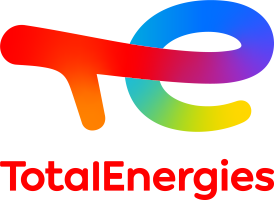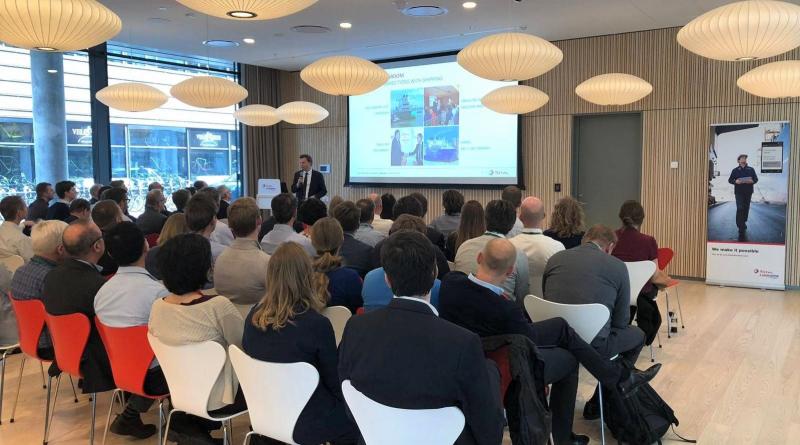Accessibility
What is digital accessibility?
An accessible communication service allows all users to access its contents without difficulty, including people with disabilities who use specialized software or hardware.
For example, it allows you to:
- Navigate with speech synthesis or Braille displays (used by Internet users who are blind or visually impaired).
- Personalize the service appearance depending on their needs (character enlargement, color modification, etc.).
- Navigate without using the mouse, with the keyboard only or via a touch screen.
To meet these requirements, the service must comply with strict standards when designed and updated.
To learn more about TotalEnergies' digital accessibility strategy:
Accessibility statement
TotalEnergies is committed to making its digital services and products accessible in accordance with Section 47 of Act 2005-102 of February 11,2005. A digital accessibility Lead, the “Mission Handicap” with a dedicated ecosystem are mobilized on the subject.
This accessibility statement applies to https://lubmarine.totalenergies.com .
Compliance status
The https://lubmarine.totalenergies.com website is partially compliant with the General Accessibility Improvement Guidelines (RGAA) version 4.1. The non-conformities and derogations are listed below.
Test results
A compliance audit conducted by Keona in December 2023 reveals that 53% of the RGAA version 4.1 criteria are met. The average compliance rate of the online service is 72%. This is the average compliance score for each page in the sample.
Non accessible content
Non-compliance
List of non-compliant criteria:
Does each information-bearing image have a textual alternative?
Is each decorative image correctly ignored by the assistance technologies?
For each information-bearing image with a textual alternative, is this alternative relevant (excluding special cases)?
1.2 Is each decorative image correctly ignored by assistive technologies?
1.3 For each information-bearing image with a text alternative, is this alternative relevant (excluding special cases)?
1.6 Does each informative-bearing image have, if necessary, a detailed description?
3.2 In each web page, is the contrast between the color of the text and the color of its background sufficiently high (excluding special cases)?
4.1 Does each pre-recorded time-lapse media have, if necessary, a textual transcription or an audio description (except in special cases)?
4.2 For each pre-recorded time-lapse media with a textual transcript or synchronised audio description, are these relevant (excluding special cases)?
4.5 Does each pre-recorded time-lapse media have, if necessary, a synchronised audio description (excluding special cases)?
4.8 Does each non-temporal medium have, if necessary, an alternative (except in special cases)?
4.9 For each non-temporal medium with an alternative, is this alternative relevant?
4.12 Is the viewing of each non-temporal media controllable by the keyboard and any pointing device?
4.13 Is every temporal and non-temporal medium compatible with the assistant technologies (excluding special cases)?
5.7 For each data table, is the appropriate technique used to associate each cell with its headers (excluding special cases)?
6.1 Is every link explicit (excluding special cases)?
7.4 For each script that initiates a context switch, is the user notified or does have control?
8.2 For each web page, is the generated source code valid for the specified document type?
9.1 In each web page, is the information structured by the appropriate use of headings?
9.2 In each web page is the structure of the document consistent?
9.3 In each web page, is each list correctly structured?
9.4 In each web page, is each quotation correctly indicated?
10.1 In the website, are style sheets used to control the presentation of information?
10.2 In each web page, is visible content still present when style sheets are disabled?
10.3 In each web page, is the information still understandable when style sheets are disabled?
10.4 In each web page, is the text still readable when the font size is increased to at least 200% (excluding special cases)?
10.10 In each web page, information should not be given by shape, size or position alone. Is this rule implemented in a relevant way?
10.11 For each web page, can the contents be presented without using vertical scrolling for a window with a height of 256px or horizontal scrolling for a window with a width of 320px (excluding special cases)?
10.14 In each web page, can additional content appearing via CSS styles only be made visible by keyboard and any pointing device?
11.1 Does each form field have a label?
11.2 Is each label associated with a form field relevant (excluding special cases)?
11.6 In each form, does each grouping of form fields have a legend?
11.7 In each form, is each legend associated with a grouping of fields of the same nature relevant?
11.10 In each form, is the input control used in a relevant way (excluding special cases)?
11.11 In each form, is the input check accompanied, if necessary, by suggestions to help correct input errors?
12.6 Can content grouping areas present in several web pages (header, main navigation, main content, footer and search engine areas) be reached or avoided?
12.7 In each web page, is there an avoidance or quick access link to the main content area (except in special cases)?
13.3 On every web page, is there an accessible version of every office document available for download (excluding special cases)?
13.8 In each web page, is every moving or flashing content controllable by the user?
13.9 In each web page, is the content offered viewable regardless of the screen orientation (portrait or landscape) (excluding special cases)?
13.10 In each web page, can the functionalities usable or available by means of a complex gesture also be available by means of a simple gesture (except in special cases)?
Preparation of this accessibility declaration
This declaration was drawn up on 15 December 2023.
Technologies used to create the site
- HTML5
- CSS
- JavaScript
Test environment
The content rendering checks were performed with the following browser and screen reader combinations:
- Firefox 119.0.1 and NVDA 2023.3
- Firefox 119.0.1 and JAWS 2022.2211.7
- Safari 17.1.2 and VoiceOver 17.1.2
Tools for assessing accessibility
- RGAA extension edited by DINUM for Firefox
- Browser Code Inspector (Firefox)
- Contrast-Finder and Color Contrast Analyser for testing colour contrasts
- W3C Validator: validator.w3.org
- HeadingsMap extension for Firefox, to visualise the structuring by titles
- Web Developer Browser Extension by Chris Pederick: https://chrispederick.com/work/web-developer/
- ARCtoolkit on Chrome for many criteria: https://chrome.google.com/webstore/detail/arctoolkit/chdkkkccnlfncngelccgbgfmjebmkmce
- Accessibility PDF / PDF Accessibility Checker (CAP 2021): https://pdfua.foundation/fr/pdf-accessibility-checker-pac
Pages of the site that have been subject to the compliance check
Structured sample
- Home page
- Contact page
- Legal information
- Accessibility
- Site Map
- Help page / Instructions for use
- Innovation Talusia Universal
- Deep Sea Shipping
- Lube-On-Ship
- Ports Rotterdam
- Bio Oils and Greases
- Our services
- Blog Article 1
- Blog Article 2
- Port search
- Products search
- Our Partners
Random sample
According to the RGAA: "randomly selected pages representing at least 10% of the pages in the sample described are added.
Feedback and contact
If you are unable to access a content or service, you may contact the site manager to be directed to an accessible alternative or to obtain the content in another form.
- Send a message using our contact form
- Contact Lubmarine by email contact.lubmarine@totalenergies.com
Remedies
This procedure should be used in the following case.
You have notified the website manager of a lack of accessibility that prevents you from accessing content or services on the portal and you have not received a satisfactory response.
- Write a message to the Rights Defender.
- Contact the delegate of the Rights Defender in your region.
- Send a letter by post (free of charge, do not put a stamp on):
Défenseur des droits
Libre réponse 71120
75342 Paris CEDEX 07



























